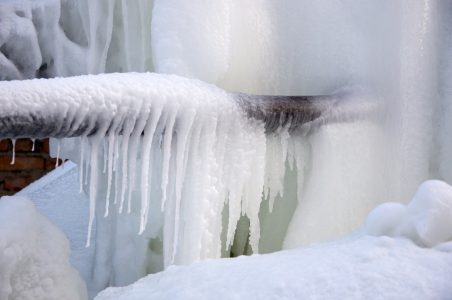Guidance for Avoiding Frozen Plumbing in Winter: Expert Tips
Guidance for Avoiding Frozen Plumbing in Winter: Expert Tips
Blog Article
We've discovered this article pertaining to How To Avoid Freezing Pipes directly below on the net and reckoned it made perfect sense to talk about it with you in this article.

Cold weather can damage your pipes, specifically by freezing pipelines. Right here's how to avoid it from occurring and what to do if it does.
Introduction
As temperature levels drop, the risk of frozen pipes rises, potentially bring about expensive repairs and water damage. Recognizing how to avoid icy pipelines is essential for home owners in cool environments.
Avoidance Tips
Protecting susceptible pipelines
Cover pipes in insulation sleeves or use warmth tape to secure them from freezing temperatures. Concentrate on pipes in unheated or exterior locations of the home.
Heating strategies
Keep indoor areas properly warmed, especially locations with plumbing. Open up cabinet doors to permit warm air to distribute around pipelines under sinks.
How to determine icy pipelines
Look for decreased water flow from faucets, unusual odors or sounds from pipelines, and noticeable frost on subjected pipes.
Long-Term Solutions
Architectural adjustments
Think about rerouting pipelines away from outside wall surfaces or unheated areas. Include added insulation to attics, basements, and crawl spaces.
Upgrading insulation
Purchase high-quality insulation for pipes, attic rooms, and wall surfaces. Correct insulation aids keep consistent temperature levels and lowers the threat of icy pipelines.
Protecting Outside Pipes
Yard pipes and exterior taps
Disconnect and drain pipes yard hoses before winter months. Install frost-proof spigots or cover outside faucets with shielded caps.
Comprehending Frozen Pipelines
What triggers pipes to freeze?
Pipelines freeze when exposed to temperature levels below 32 ° F (0 ° C) for expanded periods. As water inside the pipelines ices up, it broadens, taxing the pipe walls and possibly causing them to rupture.
Threats and damages
Frozen pipelines can bring about supply of water disturbances, residential property damages, and expensive repairs. Ruptured pipelines can flooding homes and cause extensive structural damage.
Indicators of Frozen Water Lines
Recognizing icy pipelines early can prevent them from bursting.
What to Do If Your Pipes Freeze
Immediate actions to take
If you think frozen pipes, keep taps open up to soothe stress as the ice thaws. Make use of a hairdryer or towels soaked in hot water to thaw pipelines slowly.
Conclusion
Preventing frozen pipelines calls for aggressive steps and quick reactions. By comprehending the reasons, indicators, and safety nets, house owners can secure their plumbing during winter.
5 Ways to Prevent Frozen Pipes
Drain Outdoor Faucets and Disconnect Hoses
First, close the shut-off valve that controls the flow of water in the pipe to your outdoor faucet. Then, head outside to disconnect and drain your hose and open the outdoor faucet to allow the water to completely drain out of the line. Turn off the faucet when done. Finally, head back to the shut-off valve and drain the remaining water inside the pipe into a bucket or container. Additionally, if you have a home irrigation system, you should consider hiring an expert to clear the system of water each year.
Insulate Pipes
One of the best and most cost-effective methods for preventing frozen water pipes is to wrap your pipes with insulation. This is especially important for areas in your home that aren’t exposed to heat, such as an attic. We suggest using foam sleeves, which can typically be found at your local hardware store.
Keep Heat Running at 65
Your pipes are located inside your walls, and the temperature there is much colder than the rest of the house. To prevent your pipes from freezing, The Insurance Information Institute suggests that you keep your home heated to at least 65 degrees, even when traveling. You may want to invest in smart devices that can keep an eye on the temperature in your home while you’re away.
Leave Water Dripping
Moving water — even a small trickle — can prevent ice from forming inside your pipes. When freezing temps are imminent, start a drip of water from all faucets that serve exposed pipes. Leaving a few faucets running will also help relieve pressure inside the pipes and help prevent a rupture if the water inside freezes.
Open Cupboard Doors
Warm your kitchen and bathroom pipes by opening cupboards and vanities. You should also leave your interior doors ajar to help warm air circulate evenly throughout your home.

We had been made aware of that write-up on How to Prevent Your Pipes From Freezing through a buddy on another web page. Liked our piece? Please quickly share it. Help other people discover it. We enjoy reading our article about Preventing and dealing with frozen pipes.
Or Book Technician Here Report this page